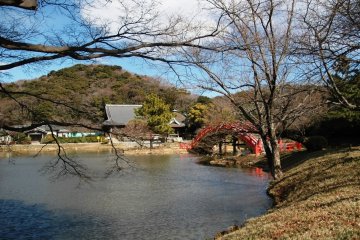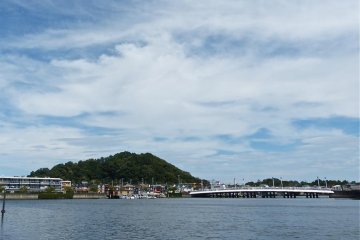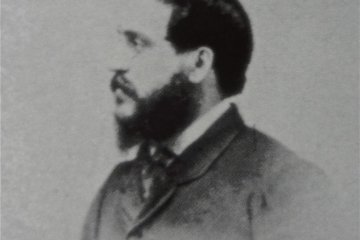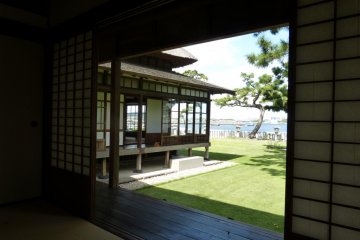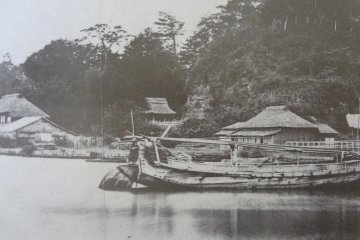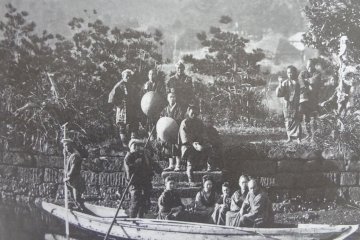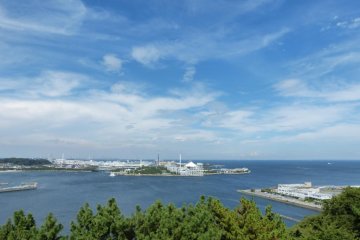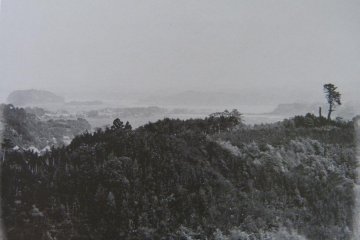Before Japan opened her doors to the rest of the world, the Kanazawa district in Yokohama commanded a stunning view of the water; this area was called Kanazawa Hakkei (literally “The 8 Wonderful Views in Kanazawa”). Italian-British photographer, Felice Beato took photos of this area 150 years ago.
Nojima Koen Park
Nojima is a small island just off the shore in the Kanazawa district. It used to be a place of scenic beauty with complicated inlets. From Kanazawa-hakkei Station on the Keikyu Line, you can enjoy a nice stroll to Nojima Island, enjoying the view of the bay and extended shore. Unfortunately, Nojima is now connected with Kanazawa by bridges, and it doesn’t seem like an island anymore.
Inside the park, there is a baseball field, barbecue area, a small shrine, an observatory tower, and the former summerhouse of Japan’s first prime minister, Hirobumi Ito.
Observatory Tower
The observatory on the hilltop of Nojima Island is 57 meters above sea level. There is nothing to obstruct your view. It’s just amazing! To the north you can see Yokohama’s Minato Mirai, to the east is Natsu-shima Island and Chiba prefecture, to the south is Yokosuka, and to the west is Kamakura. It’s totally tranquil and peaceful.
Summerhouse
This thatched-roof house (built in 1898) nestled into the northeast coast of Nojima Island faces Tokyo Bay. You can go inside the house for free. A busy Ito usually arrived at the house at night by ship. At that time, all the stone lanterns in the garden were lit up to greet him.
Felice Beato
Felice Beato was born in Venice, Italy in 1832. He was raised on the Mediterranean island of Corfu—a British protectorate at that time. He had three or more siblings. In 1843 the family moved to Constantinople, the capital of the Ottoman Empire. His sister married, James Robertson, who was a very active photographer there. This would later influence Beato’s own career as an innovative photographer. Early in 1857, Robertson, Beato and Beato’s brother Antonio went to the Middle East to shoot photographs of the area and its people. They worked energetically in Palestine, Jerusalem, Cairo, Athens, Syria, and so on. The very best photos from this trip were published in both Constantinople and London. The Beato brothers learned much from Robertson during this project.
Beato’s Footsteps
Beginning in 1858, Beato started to move further and further east. He visited India, China, and Hong Kong, and then eventually arrived at Yokohama, Japan. It was in 1863, the time Japan had just opened her doors to the rest of the world. In those days, the Japanese government had set up a settlement for foreigners who were strictly restricted to stay inside its boundaries. But Beato’s curiosity and ambition couldn’t be silenced. Beato found ways to leave the settlement in liaison with his friend Charles Wirgman (a British newspaper reporter and illustrator).
Beato’s photographing in Japan
Beato and Wirgman succeeded in traveling to many off-limit places in Japan, basically because they accompanied foreign diplomats who had special travel privileges. In 1863 Beato traveled with Aimé Humbert (Chief Ambassador of the Swiss Republic) and took many pictures of the final days of Edo (today’s Tokyo). In 1864 Beato and Wirgman were sent to cover the Shimonoseki War (a battle between feudal Japanese Daimyo against the Allied Forces of Britain, France, Holland, and America).
In 1868 Beato published a photograph collection of Japan. It included wonderful sights and spots that even foreign travelers were permitted to visit. He attached useful comments to the photos, and the book became a bestseller in the 1870’s among foreigners in Japan. Beato placed two pictures of Nojima Island in this photo book. He said: “Kanazawa district is the best place to spend time on holidays or to have a picnic. It takes about 2 hours by horseback. Wonderful views of Kanazawa consist of rolling hills and a few nice islands in the bay.” He included Nojima in his collection of photos.
Today’s Kanazawa is quite different from the one Beato once enjoyed. It is developed and has become an ordinary residential area. But we can still recognize the geographical features of what it used to be. How about taking a walk along the bay and comparing Beato’s photos with the view today?




